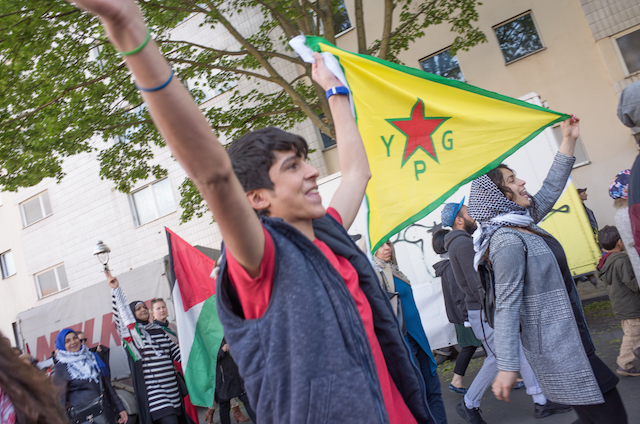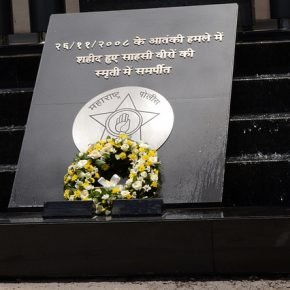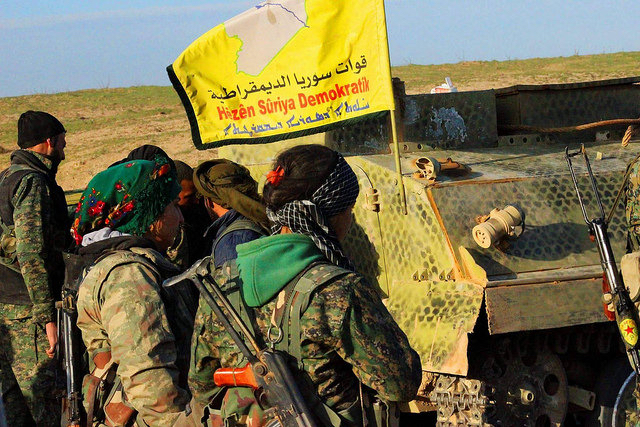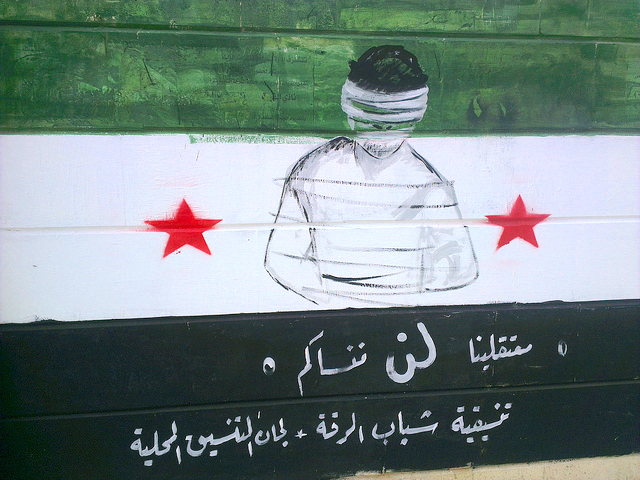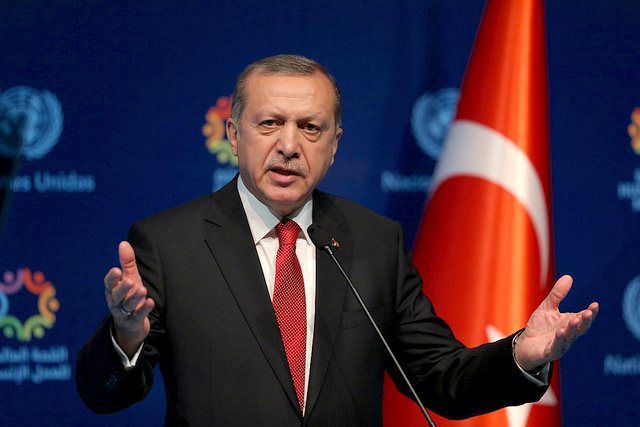BAQOFAH, Iraq – “Mike” left Iraq as a 12-month-old baby. Born into a Kurdish family, his parents fled to Norway as refugees following the brutal 1988 Anfal campaign, when the late Iraqi President Saddam Hussein’s military killed up to 100,000 Kurds.
Growing up in Norway, Mike never returned to his family’s homeland. When he came of age, he joined the Norwegian military. First, he fought with NATO forces in the 2003 war in Afghanistan and then last year he traveled to Erbil – the capital of Iraq’s autonomous Kurdish region located about 220 miles (350km) north of Baghdad – with a Norwegian military detachment, coming the closest he ever had to the home his parents so desperately wanted to leave.
The experience left him cold, however. “Our unit was sent to train the Peshmerga in Erbil, but in my opinion, it was only symbolic,” he told Refugees Deeply.
He decided just over a year ago to return to his family’s homeland indefinitely – 29 years after his parents fled with him in their arms – and join the Peshmerga, the military forces of Iraqi Kurdistan – as a volunteer in Baqofah, just north of Mosul. “I left my [Norwegian] unit and came here [to Baqofah] on my own,” he said. He has pledged to stay until the Islamic extremists have been forced out.
One of his comrades, Hirani, shares a similarly unique story as a returnee refugee fighter serving in the same unit. Hirani was born in Baghdad to Kurdish parents who fled with their then teenage son to Sweden 10 years ago. He lacks formal military training, but had volunteered in a different Peshmerga unit near the northern Iraqi city of Kirkuk before coming to Baqofah.
For Hirani’s family, who escaped the chaos of Iraq after the 2003 U.S. invasion, his decision to take up arms against ISIS – let alone return to Iraq – was worrisome. “My family and friends are against it because they know very well what kind of enemy we meet in battle,” he said, speaking to their experience in post-war Iraq. “But they are still proud and support my decision.”

Both Mike and Hirani believe that as Kurdish refugee returnees fighting on the front lines that they are different in several ways.
First, they are different from most refugees – with millions trying to get away from the fighting and reach the safety of Europe, they headed in exactly the opposite direction.
Due to unceasing conflict, the flight of civilians from Iraq also continues to the present day. The destruction caused by the 2003 Iraq war has uprooted millions of lives and resulted in a severed country that continues to experience sectarian strife, and more recently, ISIS expansion. The UN Refugee Agency (UNHCR) reports that Iraq hosted 1.5 million internally displaced persons in 2015. National estimates are much higher at 3.2 million people by September 2015. The UNHCR further claims that Iraqi refugees numbered over 2.6 million worldwide as of 2014.
They are also different, they believe, from the community of Western volunteers that has been stereotyped as adrenaline junkies in recent media reports.
Both Mike and Hirani serve in the Dohuk anti-terror unit under Gen. Wahid Kovle – a privileged position – and are based less than four miles (about 6.5km) from ISIS-held Batnaya. Baqofah, where the Dohuk anti-terror unit serves, sits in Iraq’s Nineveh region. “I’m seen as one of them [the Kurds]. I have Kurdish roots and am allowed to fight at the front,” Mike said.
Mike admits the life of a returnee refugee fighter is not necessarily action-packed. “It’s actually pretty boring. ISIS doesn’t attack this part of the front usually. Although, they use mortars and indirect fire almost every day,” he said. There was no direct fire when speaking with Mike and Hirani at their base, although dead mortars shot by ISIS were a common sight.

The pair have, nevertheless, participated in intense ground battles. They claim to have defended Tel Saqf from a powerful ISIS attack on April 3 that killed a U.S. serviceman. During the offensive, ISIS fighters launched multiple suicide attacks at the Kurdish defense lines. “The fighting inside the city was at close range. We had hand grenades thrown at us and many of the [ISIS] fighters were equipped with suicide belts,” said Mike. “We took back most of the town during the first night.”
Notably, the town of Tel Saqf, which is next door to ISIS-occupied Batnaya, and other nearby villages were home to members of Iraq’s Assyrian Christian community. According to local soldiers from Dwekh Nawsha – an Assyrian paramilitary group in the town – most of the area’s inhabitants have fled and now live in Dohuk and Erbil. The identity and make-up of the region is rapidly changing as these historic villages and towns empty of their local inhabitants.
Finally, Mike and Hirani are different in one very modern way: They are using Instagram to document their fight and share their experiences with both fellow fighters and Kurdish and Iraqi refugees.
Mike is better known by his Instagram handle – @peshmerganor – and has nearly 100,000 followers. He declines to give his full name to the press and has been dubbed “Mike” by Norwegian media. His popularity among his online followers and his fellow fighters is due in part to his story as a refugee returnee. Hirani also posts on Instagram with the handle @peshmergaswe and has 32,500 followers.
Mike’s Instagram, where he posts several times a week, provides his followers with glimpses into the life of a refugee returnee fighting ISIS, and documents front-line events such as the recent battle over Tel Saqf. His posts range from footage of battles that he captures with a helmet camera to photos of his downtime and camaraderie among the fighters.
Mike asks followers to donate to him if they are so inclined.
Instagram, he said, “is how I finance my stay here. I don’t get a salary from the Peshmerga or the Norwegian government,” noting that the proceeds go to him and supplies for his unit.
He and his fellow fighters claim this is just the period of calm before the storm. Recent reports have predicted imminent large-scale displacement, with at least 900,000 civilians expected to flee Mosul and Fallujah in the coming period. Peshmerga fighters like Mike and Hirani, the local Kurdish communities and aid agencies are bracing themselves for the impending influx.
This article originally appeared on Refugees Deeply, and you can find the original here. For important news about displacement and forced migration, you can sign up to the Refugees Deeply email list. Photographs courtesy of Joel Schalit.
